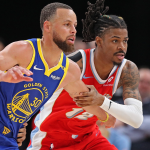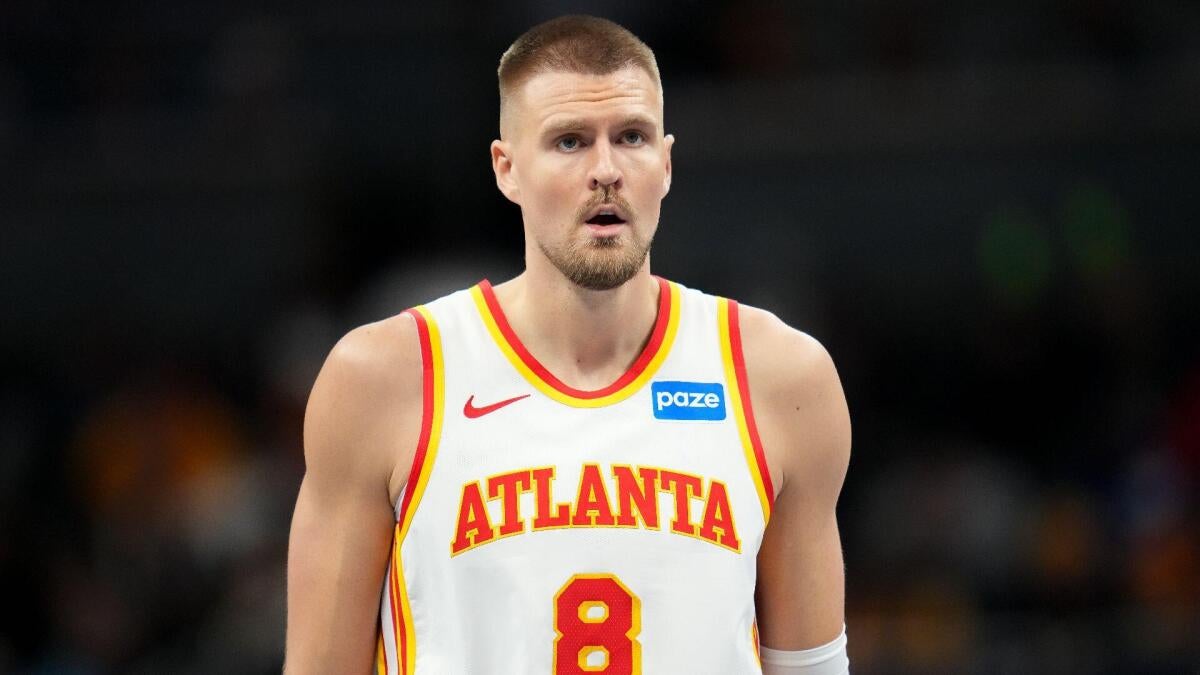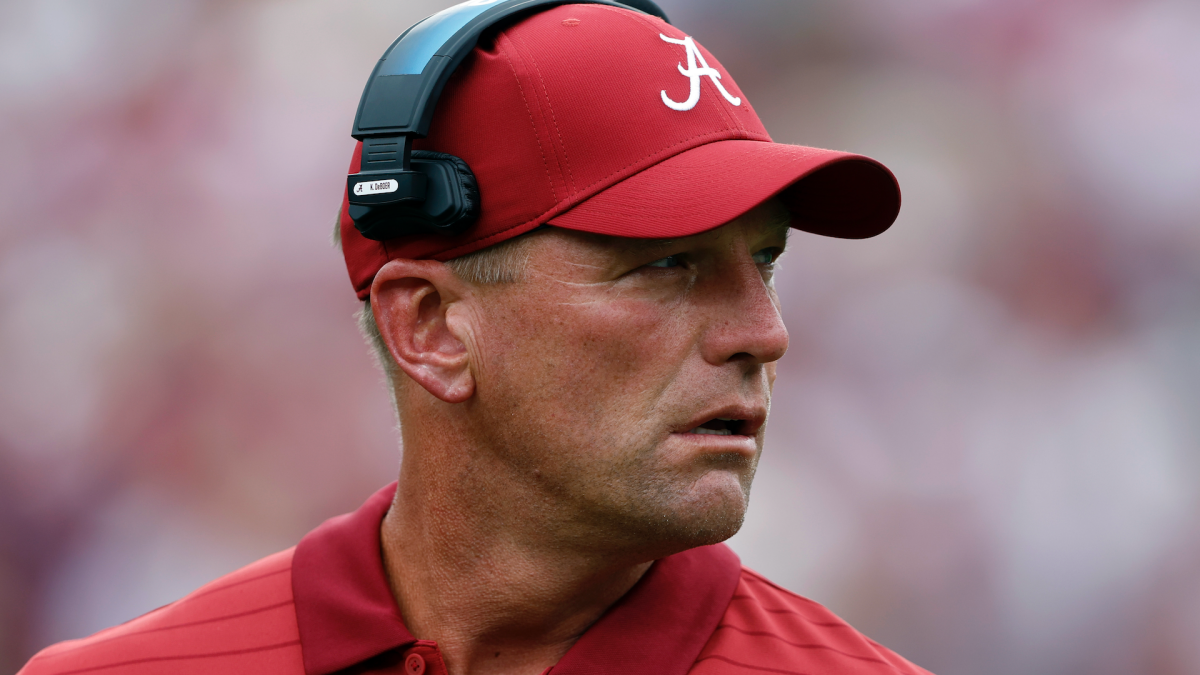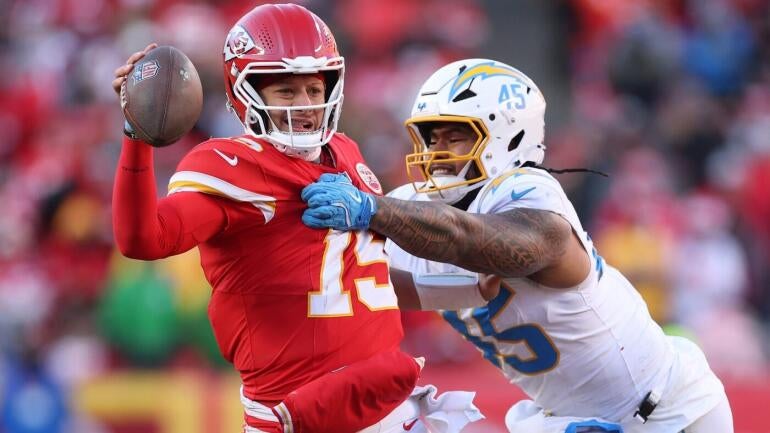
The Windup Newsletter ⚾ | This is The Athletic’s MLB newsletter. Sign up here to receive The Windup directly in your inbox.
First up, some breaking news: Jackson Merrill, 21, is in agreement with the Padres on a nine-year, $135 million extension, per Ken. More on this tomorrow.
As for today, also in San Diego, we have a heartwarming story about an infamous club losing a member. Plus: We finally get details on the “kick-change,” there’s a Meta-Maddux in Cincinnati, and Ken starts a heated debate. I’m Levi Weaver, here with Ken Rosenthal. Welcome to The Windup!

Orlando Ramirez / Getty Images
Baseball’s the Best: 2020 Club shrinks by 1
This one came in a bit late for yesterday’s Windup, but it’s still worth your time.
Last month, we told you about Andy McCullough’s story on the players whose entire big-league career consisted of playing in empty stadiums during the COVID-shortened 2020 season.
That list is one player shorter now. The last time Kyle Hart pitched in the majors was Sept. 1, 2020, with the Red Sox. It didn’t go well — he gave up six earned runs in two innings to inflate his ERA from 13.00 to 15.55. It turns out, he was battling some lingering effects from Lyme Disease at the time.
Advertisement
On Monday, Hart, now 32, took the mound for the Padres and dropped his career ERA almost four runs, allowing two earned in five innings. He also picked up his first big-league win, as San Diego beat the Cleveland Guardians 7-2.
So what did Hart get up to in those four-plus years?
- In 2021-2022, he pitched for Boston’s Triple- and Double-A teams. In 2023, he signed with the Phillies and — after being released — the Mariners, never making it out of the minors with either organization.
- But in 2024, he went to Korea and put things together. He won the league’s equivalent to the Cy Young award, going 13-3 with a 2.69 ERA. That caught the interest of the Padres, who signed him in February.
How can you not love baseball? Dennis Lin has the whole story here.
More Padres: San Diego and Arizona are expected to play a series in Mexico City in 2026.
Ken’s Notebook: Teammates weigh in on Shohei vs. Mookie
From my latest column:
In one corner, standing 6-foot-3 and weighing 210 pounds, is Shohei Ohtani, hitter, pitcher and three-time unanimous MVP.
In the other corner, standing 5-foot-10 and weighing 175 pounds (when fully nourished), is Mookie Betts, outfielder, infielder and one-time MVP.
Which Dodgers superstar is the better athlete? The Athletic posed the question to numerous Dodgers in recent weeks.
- “Oh man,” infielder/outfielder Tommy Edman said.
- “Oh God,” pitcher Tyler Glasnow said.
- “That’s a tough one,” third-base coach Dino Ebel said.
The beauty of the question is that even as baseball players, Ohtani and Betts are so different. Ohtani doesn’t play infield or outfield. Betts doesn’t pitch.
Ohtani is stronger, with a career slugging percentage 50 points higher, and faster, with a sprint speed that ranked in the 70th percentile last season, compared to Betts in the 31st percentile. (Surprisingly, the Yankees’ 220-pound catcher, Austin Wells, and San Diego Padres’ 235-pound first baseman/outfielder, Gavin Sheets, were among the players who had the same average sprint speed as Betts.)
As a pitcher, Ohtani’s career strikeout rate is 31.2 percent; Chris Sale led the majors last season at 32.1 percent. Last season, while unable to pitch during his recovery from major elbow surgery, all Ohtani did was become the first player in AL/NL history to hit 50 home runs and steal 50 bases in a single season.
The latter total was helped by rules Major League Baseball introduced in 2022 to make it easier for players to steal bases. Even then, Betts has made it to 30-30 once — in 2018, his MVP season with the Boston Red Sox.
Advertisement
No matter. In our informal poll, Betts was the clear winner. Dodgers’ utility man Chris Taylor called him “one of the greatest athletes I’ve ever played with, if not the greatest.”
Explainers: What is a ‘kick-change’?
The splinker, the sweeper, the one-finger sleazeball … OK, I made that last one up, but when is a new pitch actually a new pitch?
Such is the question about the “kick-change,” a new kind of changeup that has been spreading quickly around the league. I’ve been hearing about it since early spring training, and have wanted to write a section on it, but the truth is — even after some research — I didn’t know enough about it to be confident that I was getting it right.
Fortunately for you and I both: Eno Sarris works for The Athletic. He has an explainer today that is far more informative than anything I would ever have come up with. Here are a few things I learned:
- It was invented (we think) by Shaun Anderson, a reliever who has pitched for seven teams in five big-league seasons, plus a year in Korea (and is currently in the Angels’ minor-league system).
- A lot of changeups are the product of pronation. Hold your hand out, parallel to the floor, with your palm down. Now rotate inward until your thumb is facing down and your palm is facing outward. That’s pronation! But for some pitchers (including Anderson) their natural arm motion tends toward supination (same move, but the other direction — pinky moves downward and thumb moves upward). That’s the motion that makes the kick-change work.
- The short and dumb way of explaining what it does: Mostly it dives, kind of like a splitter, but with a different spin axis. As the pitcher releases the ball, he spikes it downward — or “kicks” it — with his middle finger.
- From Anderson, it spread via Tread Athletics — maybe you’ve heard of them from their work with Cole Ragans. Once a pitch is in a hub like that, it’s a super-spreader event.
The question now is: Will Statcast and the league define it as its own unique pitch, as they did with the sweeper? Or will it be considered just another way that guys throw a changeup?
More Eno: On “Rates & Barrels,” Eno is joined by Keenan Long of LongBall Bats to talk about the process of finding the right bat for a player, the different types of bats & handles, the torpedo bat and more.
Cool Things: Eovaldi throws a Maddux … with a Maddux?
On Monday night, the Reds scored 14 runs against the Rangers while Brady Singer throttled Texas in his Cincinnati debut.
On Tuesday, Nathan Eovaldi was a man on a mission for the Rangers. He threw MLB’s first complete-game shutout of the year, striking out eight and walking none, spreading four hits over the nine innings as the Rangers won 1-0.
Obviously a great night for Rangers fans. But for everyone else, there was still a fun little angle:
In the ninth inning, Eovaldi’s 89th pitch of the night was whacked into right field by Jacob Hurtubise for a leadoff single. On the next pitch, TJ Friedl squared to bunt, pulling his bat back at the last minute for ball one. That earned Eovaldi a visit from Rangers pitching coach Mike Maddux — both to discuss bunt coverage, and also to give relievers Chris Martin and Luke Jackson a little more time to warm up.
Advertisement
Perhaps you see where this is going.
You see, when a pitcher throws a complete-game shutout in fewer than 100 pitches, that’s called a “Maddux.” It was coined by baseball writer Jason Lukehart in 2012. Since 1988 (the first year for which we have accurate pitch-count data), Hall of Famer (and Mike’s brother) Greg Maddux holds the record for the most such starts, at 13.
Nine pitches later — No. 99 for the night — Eovaldi got Elly De La Cruz to ground out to first base. It was a Maddux, with a little help from a Maddux. Pretty cool!
Handshakes and High Fives
Sometimes you just need a new voice. For Kodai Senga, the Mets’ new assistant pitching coach Desi Druschel might be that voice.
More torpedo bat! It turns out, some players were using them last year — including Giancarlo Stanton and Francisco Lindor. But “Torpedomania” has now hit, and bat makers are having a wild week. (Of note: My sandlot baseball team and I have pooled funds and purchased one of these. I will report back once it arrives. Nobody will care about this by then.)
Tyler Glasnow looked dominant Monday night. He hopes the adjustments he made over the offseason will keep him healthy enough to do it in the postseason.
Evan Drellich was in Sacramento for that strange A’s home opener. He walks us through the experience.
We have more on the Garrett Crochet extension. Jen McCaffrey says it could be just the start of the team locking up its core, while Steve Buckley says it’s another signal that Boston is committing to avoid any more last-place finishes.
With Crochet and Cal Raleigh signing extensions, resident expert Tim Britton looks at what that means for the market.
I know collecting is a business now. But it was a lot of fun to read an article about baseball cards that leaned hard into the nostalgia and the reasons we used to collect cards back in the old days.
Advertisement
On a personal note: Godspeed and good luck to Ryan Divish of The Seattle Times, who is taking a four-month sabbatical. Divish is among the best in our field, and we wish him well.
Most-clicked in our last newsletter: Our first power rankings of this young season, featuring one encouraging sign for each team.
📫 Love The Windup? Check out The Athletic’s other newsletters.
(Top photo: D. Ross Cameron / Imagn Images)
This news was originally published on this post .










Be the first to leave a comment